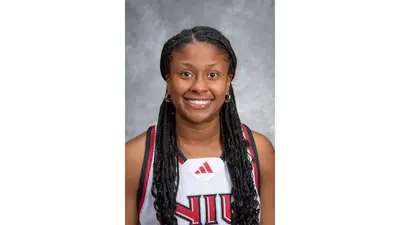Jiahui Li, Zhuang Xu, Siavash Khodakarami, Jae Kim, and Kaijun Yin have been awarded PPG Materials Research Laboratory (MRL) Graduate Research Assistantships to pursue cutting-edge research broadly related to the areas of interest to PPG.
MRL director Paul Braun notes that the assistantships are a valuable opportunity for outstanding graduate students. “We are grateful to be able to continue partnering with PPG on these graduate research fellowship programs, which provides top MRL graduate students with the ability to work on real-world problems with many opportunities for interaction with PPG,” he said.
PPG and the PPG Foundation aim to bring color and brightness to PPG communities around the world. By investing in educational opportunities, the company and foundation help grow today’s skilled workforce and develop tomorrow’s innovators in fields related to coatings and manufacturing. This student program supports the University of Illinois community with new thought leaders at the Materials Research Laboratory (MRL).
Jiahui Li, PhD Student, Materials Science and Engineering
“My research focuses on implementing chirality through the self-assembly of colloidal nanoparticles in a low cost, high yield and energy-saving manner. Nanoparticles have great function diversity and tunability, making them ideal for enabling precise and large-scale fabrication of metamaterials and establishing a toolbox to manufacture sensors, polarization-based optical devices, and biological imaging. I will utilize different film formation strategies including stationary drop evaporation, blade or comb directed evaporation, and three-dimensional printing to systematically vary the chirality, extend chirality to three-dimensions, and build chirality macroscopically. Furthermore, I will integrate ex-situ and in-situ characterization in engineering the chiral superlattice using variations of tetrahedra nanoparticles as the building blocks. By using liquid-phase transmission electron microscopy, I will visualize the morphology change and manipulate nanoparticle-based chiral metamaterials by applying external stimuli or changing liquid environment. The realization of reconfigurable nanomaterials in solution not only provides critical insights in nanoparticle dynamics and relates the structures with their optical, mechanical, and catalytic properties, but also purposes applications including artificial chiral stents, beam steering devices or waveguides and stimuli-responsive shape changing inorganic smart surfaces.”
Prof. Qian Chen, Advisor (Materials Science and Engineering)
"Jiahui is an all-around PhD student. She has both great hands doing experiments and a quantitative mind that enables her to write her own analysis codes for theoretical modeling. She has deep and thorough critical thinking and an outgoing, articulative communication style. She has ambition, persistence, and a genuine humbleness to take others’ criticisms, and she has great story-telling skills and also artistic taste to make beautiful graphics. Her work on scaled-up assembly of chiral colloidal films as optical and mechanical metamaterials provides new insights into energy-efficient and high throughput design of chiral flexible electronics, auxetic stent, and morphing airfoils. "
Zhuang Xu, PhD Student, Chemistry
“My research focuses on investigating the assembly pathway of semiconducting polymers. The solid-state properties of those polymers depend sensitively on their morphologies across length scales, encompassing molecular-scale intramolecular conformation and intermolecular ordering, mesoscale domain size, orientation and connectivity, and macroscale alignment and (para)crystallinity. This multiscale morphology is largely affected by solution-state structures and their assembly pathway from solution to thin films. By controlling the molecular design, solvent, coating temperature and techniques, we aim to tune the solution aggregate structures, their assembly, and the solid-state properties in a controlled fashion.”
Prof. Ying Diao, Advisor (Chemical and Biomolecular Engineering)
“Zhuang is remarkable in his ability to think deeply about polymer assembly mechanisms, his ability to quickly master sophisticated structure characterization techniques, and his knack for problem solving needed for successful device engineering. Students excelling at all three aspects are rare to come by and my group is fortunate to have Zhuang.”
Siavash Khodakarami, PhD Student, Mechanical Science & Engineering
“My research focuses on two-phase heat transfer characterization on engineered surfaces via the collection of regular, high-speed, and infrared data along with data-driven modeling and deep learning-based computer vision techniques to capture and predict the dynamics of droplets and bubbles. My work focuses on developing novel cost-effective and reliable two-phase heat transfer characterization techniques and a better understanding of the surface heat transfer performance on engineered surfaces.”
Prof. Nenad Miljkovic, Advisor (Mechanical Science & Engineering)
“What really sets Siavash apart from his peers is his ability to independently conduct research in areas where my laboratory is not an expert in. His work on machine learning and machine vision was initiated by him. He has been successful in developing machine vision methods to study phase-change phenomena and quantify heat transfer from images only, which significantly simplifies experimental methods for two-phase flows. The PPG fellowship will enable him to continue his independent work and success as a PhD student. I look forward to seeing him become a leader in the field.”
Jae Kim, PhD Student, Materials Science & Engineering
“The goal of my research is to use the ionic liquid (IL)-added aqueous systems for electrocatalytic reactions and probe molecular structures at electrode-electrolyte interfaces using a tool with a strong interface-sensitivity. The added-IL enhances the catalytic activity for many reactions, such as carbon dioxide reduction reaction and oxygen reduction reaction. However, current understandings on the IL-added aqueous systems are limited to its performance, and details of reaction mechanisms have not been revealed due to the limited number of techniques that can detect the interfaces. Thus, by studying the interfaces where reaction intermediates reside, my research will reveal a physical origin of the enhanced catalytic activity by the added-IL and furthermore provide a guide to develop next-generation catalyst suitable for large-scale conversions.”
Prof. Yingjie Zhang, Advisor (Materials Science & Engineering)
“Jae is an outstanding student who is highly motivated to initiate research directions and overcome challenging problems. At the same time, she is continuously improving herself in both scientific depth and experimental skills. She has made significant discoveries in the area of electrochemical interfaces and is on track towards a leading student researcher in this field.”
Kaijun Yin, PhD Student, Materials Science & Engineering
“My research is on material characterization of ultraviolet (UV) radiation-damaged fused silica glass to identify the root cause of catastrophic failure. UV sources are widely used in optical lithography metrology to identify fine features. Because high purity amorphous silicon dioxide (fused silica, a-SiO2) is transparent in UV regions, and homogeneous in optical and thermal properties, a-SiO2 is an excellent choice in UV optics in microlithography, including UV lamps. However, catastrophic failures of the lamps occur at various stages of lamp lifespan. The principal expectation of this project is to define characteristic features on inner surfaces of the lamp (pure fused silica) and the triggers for lamp explosion. Electron tomography, assisted with molecular dynamics (MD) theory, has the potential to be a powerful tool for the determination of atomic structure in disordered materials.”
Prof. Jian-Min Zuo, Advisor (Material Science & Engineering)
“Kaijun will research on the atomistic structure of amorphous materials. While the study of periodic crystals is well-established using diffraction techniques, the structure of materials such as fused silica glass for optical applications and amorphous silicon present a significant challenge to the materials research community. Kaijun seeks to address this challenge using the state of art coherent electron diffraction and atomic level imaging with the goal to developed advanced materials for semiconductor and energy applications.”
Original source can be found here.





 Alerts Sign-up
Alerts Sign-up